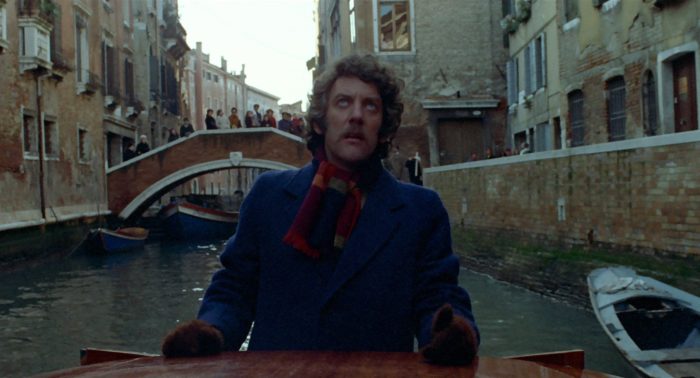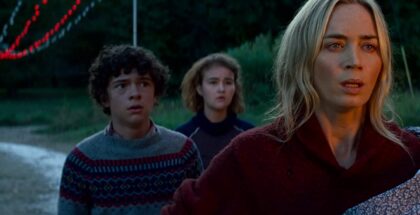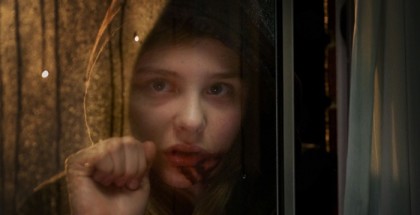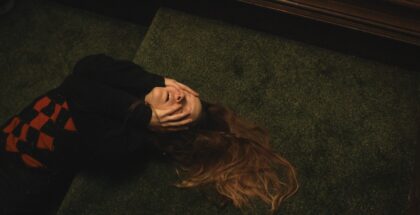VOD film review: Don’t Look Now
Review Overview
Cast
10Location
10Direction
10David Farnor | On 25, Nov 2018
Director: Nicolas Roeg
Cast: Julie Christie, Donald Sutherland
Certificate: 15
Some of the best horror stories in movie history are entangled in loss, the unique melancholy of grief. At the top of the list is surely Don’t Look Now, Nicolas Roeg’s dark mystery. It’s a tale that doesn’t just trade in despair – it’s suffocated by it, every inch of the frame suffused with sadness, isolation and distress.
It follows a couple, Laura and John Baxter (Julie Christie and Donald Sutherland), trying to come to terms with the death of their daughter, Christine, a tragic incident that continues to haunt them all the way to Venice, where John has been hired to restore a church. There, they find themselves face to face with what appears to be Christine, running through the winding streets of the watery city, always out of reach. When two sisters, one of whom is psychic, claims to carry a warning for them from the other side (and says she can see Christine laughing, happily, with them), the couple become obsessed with getting to the truth of what’s going on.
“Nothing is what it seems,” says John early on, and that motto becomes keenly, painfully true, as our pair are taken down two increasingly divergent paths, each one led by what seems to be real for them. Adapted from Daphne du Maurier’s short story by Chris Bryant and Allan Scott, Roeg’s treatment of the material dives into that divide with a raw intensity and and vivid visuals.
Roeg is a towering figure in British cinema, with his work influencing filmmakers generations on in everything from Fashionista to The League of Gentleman. The director’s signature flourishes are everywhere here, from the use of the colour red to the non-linear storytelling, but what makes Don’t Look Now such a unique horror is that all of this is in service of the characters’ inner anguish. The fragmented editing only heightens the sense of disconnection between husband and wife, leaving us down one train of thought, without realising that the visions we’re experiencing are at once subjective and also sealing their fate. The red, meanwhile, is just one of many striking echoes of the devastating drowning that’s revealed in gradual flashbacks – Christine’s fatal submersion plays out again and again in the bright-coated figure we see, the child’s doll that’s removed from a Venetian canal, the very presence of water all around us, and the serial killer subplot that leads to corpses being dredged from beneath its surface every few scenes. Even the act of falling becomes a disturbing motif, as both our characters suffer falls to varying degrees of fatality.
The result is a decidedly downbeat picture despite taking place in one of the most stunning cities in the world. Venice itself is plunged into a gloomy limbo, all cloudy skies, chilling atmosphere and, like our characters’ emotional state, prone to spiralling into a labyrinth of confusing options that conceal what will happen next; it’s literally impossible for the couple to see a future for themselves. Roeg mines that disorientation by omitting subtitles for the Italian dialogue, while spending time repeatedly following John’s hunt for Laura, who seems to have gone missing, and always deploying harsh cuts to unsettling effect; one particular montage jumps from Laura screaming at discovering Christine to a drill boring deeper into ancient brickwork.
Most dizzying of all is the sense of timelessness that Roeg constructs. From early on, we see water spill onto a slide of the church, turning things crimson with a growing puddle that looks almost painterly in its harrowing beauty. And so we’re immersed in this maze where past and present can co-exist, both literally and mentally, an accurate metaphor for memory, which both enables and obstructs our ability to move on from loss; what separates our couple aren’t necessarily the supernatural forces at play, but their individual grieving processes. One of the most powerful scenes sees them have sex, which is cut together with them getting dressed later that evening – a striking subversion of cinematic convention, which normally moves from foreplay to the bedroom in that order. It’s a signpost for the film’s structural use of flash-forwards, but also a depiction of a married couple who know each other’s bodies already; sex is as much about the heated moment as it is the effort to stay together in the everyday routines to follow. And yet their fate is already sealed, and the shocking denouement is unavoidable, as the couple can’t escape the impact their loss has had upon their lives. It’s a grim tale that’s notably without hope, and it sticks with you for years, until you inevitably go back to experience it all one more time. As a side effect, you’ll never see Venice in the same way again. How many films can you say that about?




















